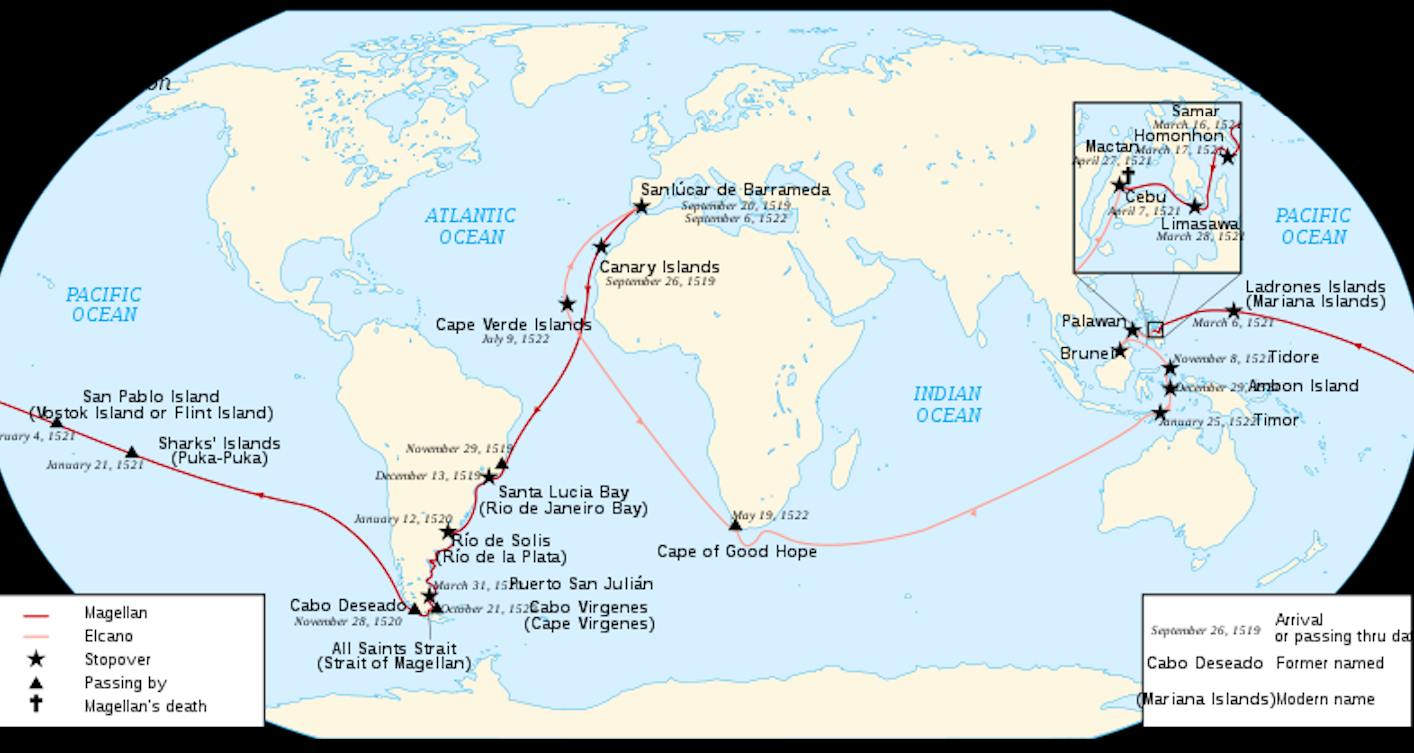Ferdinand Magellan, a Portuguese explorer who lived from 1480 to 1521, is best known for leading the first European expedition to circumnavigate the globe. Though he did not survive the journey, his name remains synonymous with one of the most significant maritime achievements in history. This article delves into Magellan’s life, his ambitious voyage, and the legacy that continues to shape our understanding of exploration.
Early Life and Career
Born in either Porto or Sabrosa, Portugal, around 1480, Magellan came from a family of minor nobility. As a child, he was trained as a page for Queen Leonora and later studied at the School of Pages in Lisbon, where he developed a keen interest in navigation, cartography, and astronomy. By his mid-20s, he had already joined the Portuguese navy and participated in several military campaigns in Asia, including the Battle of Diu in 1509 and the conquest of Malacca in 1511. During this time, he acquired a native servant named Enrique, who would later play a pivotal role in his historic voyage.
Magellan’s early career was marked by both success and hardship. After being wounded in a battle in Morocco in 1513, he faced accusations of trading illegally with the Moors, which led to his dismissal from the Portuguese navy. Seeking new opportunities, he moved to Spain in 1517, where he proposed a daring plan to find a western route to the Spice Islands (modern-day Indonesia). His idea was based on the belief that a passage through South America could provide a shorter path to the East, bypassing the Portuguese-controlled routes around Africa.
The Voyage of Circumnavigation
In 1519, with the support of King Charles I of Spain (later Holy Roman Emperor Charles V), Magellan set out on what would become the first circumnavigation of the globe. He assembled a fleet of five ships—Trinidad, San Antonio, Concepción, Santiago, and Victoria—and embarked on a journey that would test the limits of human endurance and navigation.
The expedition began with a stop in Brazil before heading south along the coast of South America. In October 1520, the fleet discovered the strait that now bears Magellan’s name, allowing them to enter the Pacific Ocean. The journey across the Pacific was grueling, with the crew suffering from scurvy and starvation. Despite these challenges, they eventually reached the Philippines in March 1521.
Death and Legacy
In the Philippines, Magellan became embroiled in a local conflict between rival leaders. On April 27, 1521, he was killed during the Battle of Mactan while attempting to mediate between the local chief Lapulapu and the Spanish forces. With Magellan dead, command of the expedition fell to Juan Sebastián Elcano, who led the remaining crew back to Spain.
The Victoria, the only ship to complete the journey, returned to Seville in September 1522, having traveled over 60,000 miles. Of the original 270 crew members, only 18 survived. While Elcano is often credited with completing the first circumnavigation, the expedition itself was Magellan’s vision, and his name remains central to the story.
Controversy and the Question of First

There has been ongoing debate about who truly completed the first circumnavigation. While Elcano and the surviving crew are widely recognized, some historians argue that Magellan’s servant, Enrique, may have achieved the feat first. Enrique, originally from Malacca, was with Magellan during the expedition. After Magellan’s death, he reportedly fled the Philippines, and if he managed to return to his homeland, he might have been the first person to circumnavigate the globe, albeit not in a single voyage.
This theory adds an intriguing layer to the story, highlighting the complex and often overlooked contributions of individuals like Enrique, whose role in history has been overshadowed by the more prominent figures of the time.
The Impact of the Expedition

Magellan’s voyage had far-reaching consequences. It confirmed the Earth’s roundness, opened new trade routes, and expanded European knowledge of the world. The discovery of the Strait of Magellan and the naming of the Pacific Ocean (which Magellan called Mar Pacifico) were significant milestones in maritime history.
Moreover, the expedition laid the groundwork for future explorations and the eventual colonization of the Philippines and other parts of Southeast Asia. The legacy of Magellan’s journey continues to influence modern navigation, with many of the routes he charted still used today.
Conclusion
Ferdinand Magellan’s life and expedition represent the spirit of exploration and the relentless pursuit of knowledge. Despite the hardships and loss, his vision and determination paved the way for one of the greatest achievements in human history. While he did not live to see the completion of his journey, his name endures as a symbol of courage, innovation, and the unyielding quest to understand the world. The story of Magellan reminds us that the path to discovery is often fraught with challenges, but the rewards are immeasurable.



